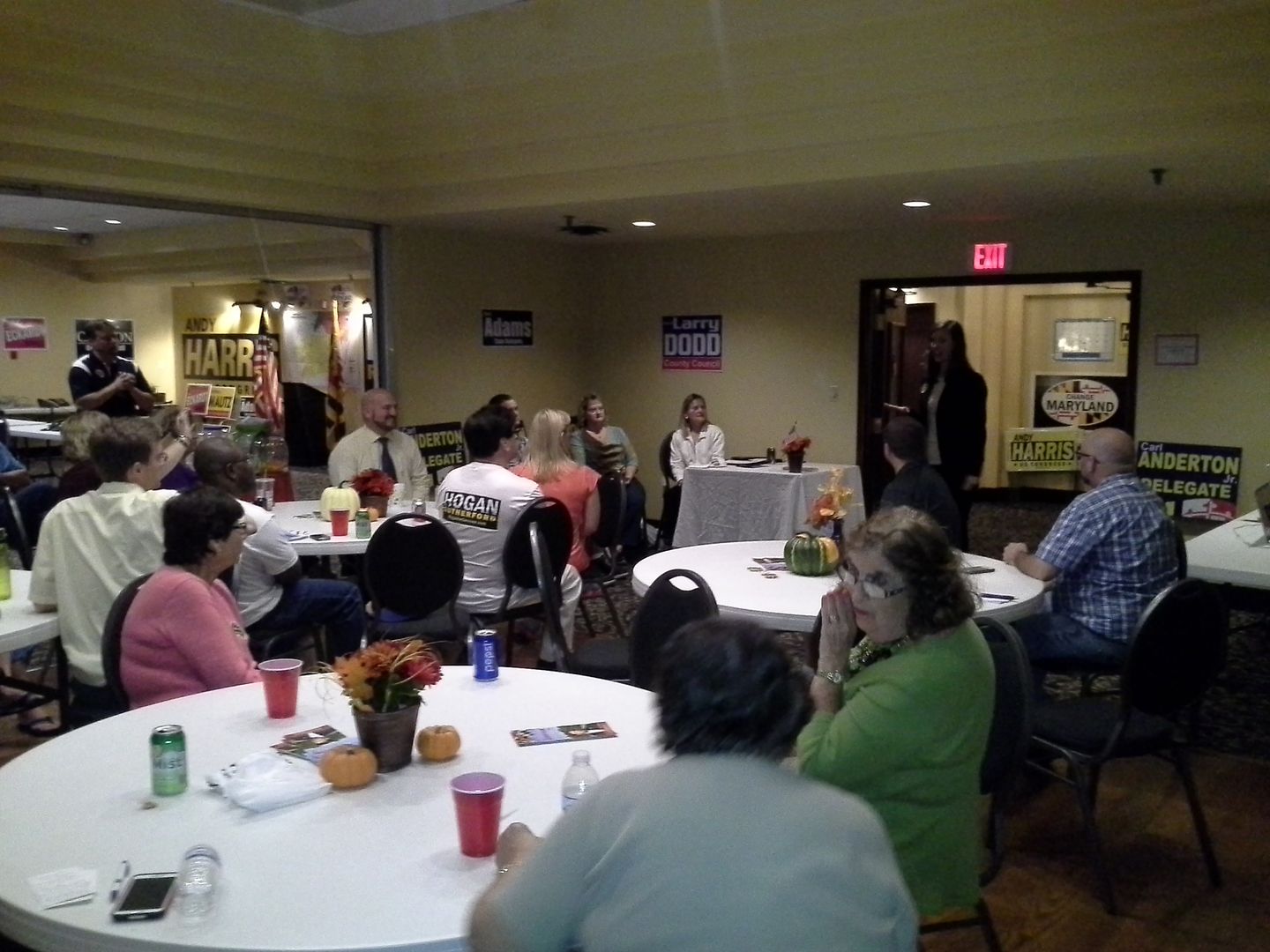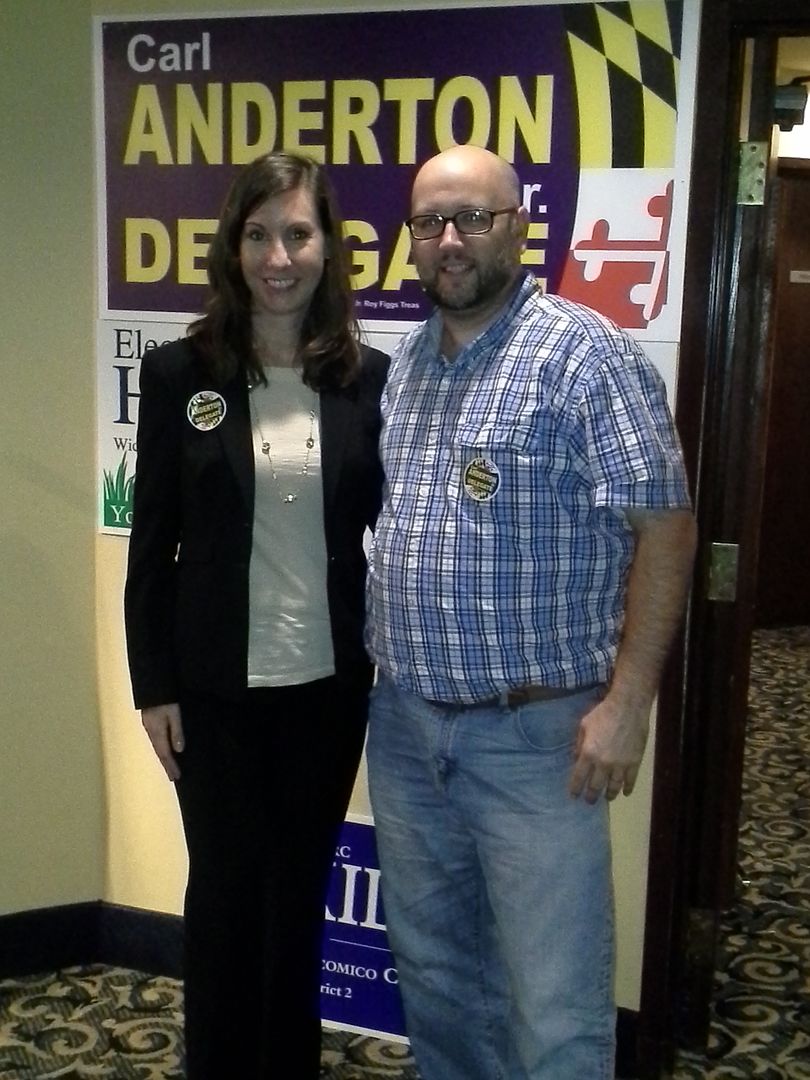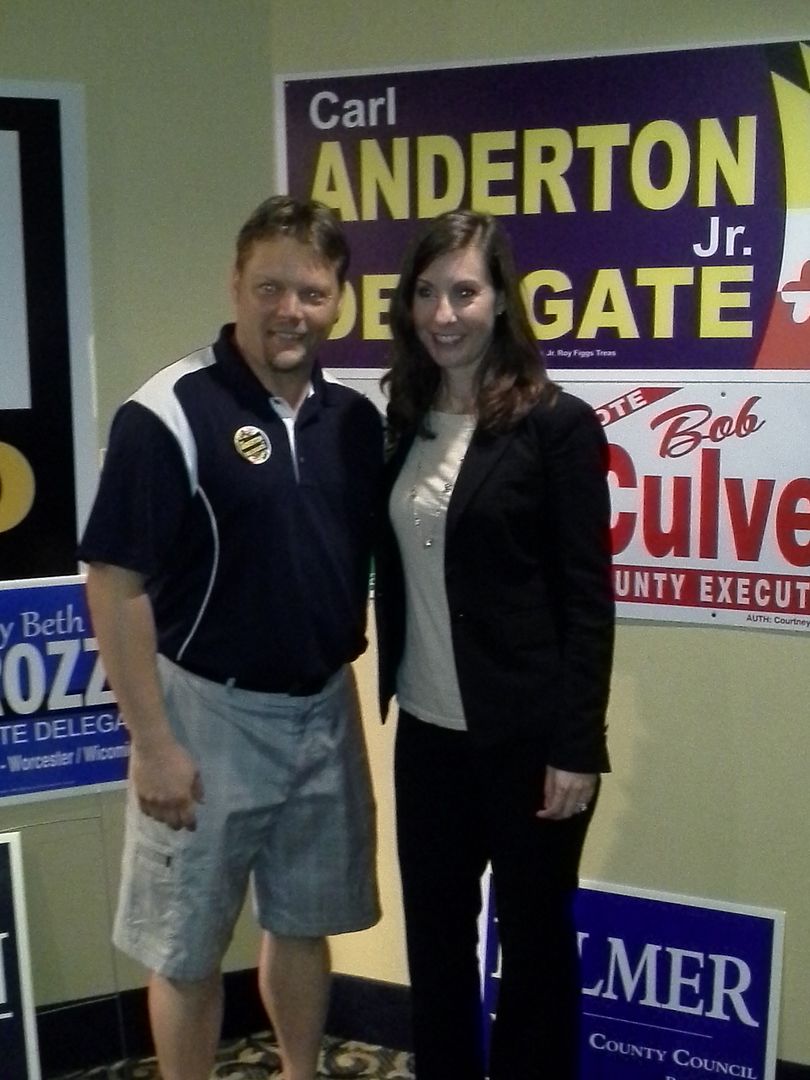On Thursday Red Maryland noted that David Craig’s LG candidate Jeannie Haddaway-Riccio voted five years ago for the Greenhouse Gas Reduction Act of 2009. Although it’s a bit of a stretch to say she “put the VMT tax on the table,” she was one of a handful of Republicans who voted for the measure.
And even though Red Maryland has already expressed its support for Craig’s opponent Larry Hogan, the Craig campaign felt compelled to put out talking points rebutting the piece by Mark Newgent. Unfortunately, it’s difficult to defend this law within these quarters.
#1 – The VMT tax was proposed by the O’Malley Administration and was the result of an O’Malley Executive Order, not legislation.
Indeed, we have not seen a VMT tax come to fruition as legislation, although we have had, over the last two sessions, a bill to prohibit collection of such a tax introduced and heard in the General Assembly.
#2 – The legislation Delegate Jeannie Haddaway voted in favor of (as did other Republicans) ensured that other states do their fair share to improve air quality standards so that Maryland citizens – and Maryland utility companies – do not bear the full burden in the effort to clean the air (especially since our airshed goes all the way out to Ohio). Air pollution costs MD millions of dollars each year (it accounts for one-third of the acid deposition in the bay, crop damage, health care, etc).
Maryland was actually ranked highest in the country for deaths related to air pollution.
In reading the bill, I see no assurances of the kind. Much of it was based on future legislation. Moreover, we can’t guarantee any other state does its “fair share” just as they can’t guarantee we do things for them. This legislation wasn’t part of a compact, so Ohio can do as it wishes in their part of the “airshed.”
#3 – This was good legislation for Maryland taxpayers. The legislation resulted in tens of millions of dollars in ratepayer relief for ratepayers that would be reflected on their utility bills until the O’Malley/Brown administration took the money and put it in the General Fund.
But we don’t know that, as such reductions were not explicitly spelled out in the bill or the fiscal note. It did mandate that changes not adversely affect certain electric ratepayers (or manufacturing) but that was something the state would judge, not those affected.
#4 – Who are democrats and independents that care about the environment and the economy going to vote for in the General Election? A team that can balance the environment with our economic needs or a real estate developer that has developed 35,000 acres and doesn’t care about the environment?
You’re talking to the wrong person if you want to go on an anti-development screed, because there’s nothing wrong with development. If a state or region doesn’t grow economically, it dies. However, while it’s possible Hogan does care about the environment, his agenda has never been formally spelled out. In a subsequent conversation Newgent stated Hogan wanted to address the sediment behind the Conowingo Dam, which will assist in restoring the Bay’s water quality, but we still don’t know where he stands on other aspects of environmental policy such as pulling out of RGGI, or what Chesapeake Bay measures he would cease or continue. Actually, I hope Craig revisits some of the legislation that’s already passed as he said he would.
#5 – Maryland’s economy depends on clean air and water. Farmers and watermen depend on a clean environment, our tourism industry depends on a clean environment. Delegate Haddaway has successfully balanced jobs and the environment; she has consistently earned high scores for her environmental record while still maintaining a 100% business rating (MBRG).
I don’t doubt that because where Jeannie usually falls short on the monoblogue Accountability Project is in the realm of environmental votes like the vote being discussed here. It’s why her lifetime rating is only in the 70s. Government tends to forget the earth does a very good job of healing itself.
So I really don’t buy the talking points. But I also have to consider the source of this slam on Haddaway, and remember: the assertion was that Haddaway’s vote “put the VMT tax on the table.” That cause-and-effect doesn’t compute, because in this term no bill has been introduced to enact a VMT levy. nor did Haddaway write the state’s master transportation plan. Unfortunately, neither VMT prohibition bill ever got past the hearing stage so we don’t have a recorded vote (although she was not a co-sponsor.) Even without the legislation or the master plan, though, it’s likely the greedy Maryland tax collectors would be among the first to seek a VMT whether the GGRA was passed or not. By this token, Haddaway should be given credit for voting against the “rain tax” that some Republicans backed.
Yet this post of mine may never have happened without a patented parting shot from the guys at Red Maryland:
Now this brings us to our friend Michael Swartz, who, in his endorsement of David Craig, wrote that picking Haddaway-Riccio “sealed it” and made “the difference” in his endorsement.
This is curious given Swartz is such a critic (and rightfully so) of the very policies Haddwway-Riccio not only voted for, but sponsored.
It’s true that I disagreed with the vote, but when I weighed all the evidence I still came out with the Craig team on top. This would be true of any legislator, and had I been here in the initial days of the Ehrlich administration I may not have agreed with all of Larry Hogan’s appointments. As I’ve noted on my Facebook page, Larry was praised by Red Maryland for selecting “the most bipartisan, most inclusive, and most diverse administration in Maryland history.” As I asked there, what about conservative? Being “bipartisan” only seems to work one way in this state.
And unfortunately there was a lack of context in what Newgent quoted, since the reason Haddaway sealed it and made the difference was that Ron George picked a weaker LG candidate. At that point Hogan/Rutherford wasn’t even in the running.
But a particular reason I selected Craig/Haddaway over Larry Hogan was the vague platform Larry’s put out thus far. And the Red Maryland bloggers aren’t helping in that cause – instead, they seem to focus on attacking everyone else in the race. In many cases, it’s legitimate criticism of the others, but they seem to turn a blind eye to actually educating voters on the merits of the candidate they support through discussion of his proposed policies. “Jobs, middle class families, and restoring our economy” are nice catchphrases, but how will you get there?
I did a little reading through Red Maryland just to see what light they have shed on Hogan. Since January they’ve done a total of 17 posts on Larry, ones I found by typing “Larry Hogan” in the search box. A number of those posts were radio show promos, but here’s what else came up:
- May 21 and 22 posts about the “coordinated effort,” as Ron George and David Craig questioned the connection between Change Maryland and Hogan’s campaign, a legitimate query which RM called “desperate times” from George and Craig.
- A series of posts May 12 concerning a poll that the authors claimed was evidence Larry could “compete if not win on November 4.”
- A May 5 article claiming that, “Most candidates have talked solely about reducing taxes, though Larry Hogan…has also focused on the need to reduce spending.” Yet David Craig notes under “Taxes and Fiscal Responsibility” that he will “use this (budgeting) authority (as Governor) to make actual cuts to the budget.” Ron George is a little more vague, but points out he would be “cutting any waste found by these (independent) audits” and would level funding “whenever the economy slows.” The assertion is only correct about Charles Lollar. On May 1, they also promoted Hogan’s “reduce-spending first strategy” as a discussion topic for their radio show.
- Other articles dealt with milestones like Hogan’s fundraising, first television ad, and initial web advertisement. Hogan was also peripherally mentioned in the Media Matters and Baltimore Sun controversies.
And what did we learn about the others? In 13 posts about David Craig and/or Jeannie Haddaway, they noted the aforementioned VMT tax, her wobbly stance on bond bills, her support of film tax credits which helped her district, and property tax rates in Harford County under Craig. Most of the 13 could be construed as negative. They grudgingly praised Craig’s idea to eliminate the income tax, although the focus of that piece was to hammer Charles Lollar (more on him in a bit.)
Ron George merited just six posts, with just a couple being negative – mainly he was a peripheral mention in a larger Hogan context, although in the controversy over film tax credits Ron got a much larger role when the RM crew railed against fellow blogger Joe Steffen. They did give Ron the chance to clarify his position on the film tax credit issue, but did not on the “desperate times” posts.
And while Hogan had 17 posts, Charles Lollar rated 15, with nearly all of them severely negative towards him. Indeed, Charles was caught in a number of contradictions (as I also noted in my endorsement post) but the venom toward Lollar was palpable. You’d have thought Charles was Anthony Brown, who received 18 posts in the same time frame – in that case, the negativity was more justified.
In all, Red Maryland has done 235 posts (as of this writing) in 2014. As I noted, just 17 promoted Larry Hogan in some way, with 22 others (by my count) talking about other gubernatorial candidates. I will grant I rarely listen to the RM radio network so I don’t know what conversation has come up there, yet it seems that the majority of Red Maryland‘s time is spent painting their non-endorsed candidates in a negative light. And that’s fine because politics ain’t beanbag.
Yet one has to ask: does that help the overall cause for Republicans in Maryland? I’m not saying by any means we should just parrot the talking points, because each candidate has areas which need improvement. When people ask me, I can honestly tell them good things about the four Republican gubernatorial candidates as well as places where we may disagree. Perhaps the RM crew can do the same, but their stance on Hogan seems to be one of “trust us, you’ll like him and we need the change.” I don’t dislike Larry but I do dislike trying someone unproven, and even many who endorse him don’t know all Hogan stands for. They just equate leadership of a development company and a popular social media group – which has brought a number of good issues to the forefront – with being able to run the state. I don’t.
And look what Red Maryland has reaped from this approach, which makes this post seem prophetic. Obviously their promotional appeal fell on deaf ears: there are no candidates advertising on their website or radio network, which only attracts a few hundred listeners a week as shows have dropped off for other outlets or simply faded away over the last several months.
Just as a contrast, this post will be number 191 on the year for me, so the comparison is relatively apples-to-apples. By my count, I have written about Larry Hogan the most (59 posts), with Ron George meriting 45, David Craig 44, and Charles Lollar 36. (Obviously many posts feature more than one candidate.) Many have been critical, but my goal has been to enlighten voters and let them decide. It also helped me out because I was truly undecided on the governor’s race right about up to the time I wrote my endorsement. While I don’t have a radio show (nor any plans to begin one) I do have a solid cadre of local candidates who wanted to advertise here.
If you assume the polls are correct and Larry Hogan wins the primary, I’m assuring you he’ll get my vote in November. It’s the baseline level of support any Republican should give a GOP candidate. But the question is how much support will those who backed other candidates give to Hogan? In some respects, Red Maryland has burned quite a few bridges in the last few months by dropping any pretense of objectivity and becoming Larry Hogan’s attack dog, and that could spill over to other races they involved themselves in, such as the Hough-Brinkley race in Senate District 4 or the free-for-all in House District 31B.
These tactics could shift those races. Already I hear a number of people who say they’ll sit out November if Hogan wins, and that’s not good for any of us. I encourage those people to reconsider, or at the very least find some local races to get involved in.
I probably don’t speak for everyone, but I think I speak for a lot of people when I say Red Maryland has let us all down as “Maryland’s premier conservative source.” Endorsing Larry Hogan before he even formally announced was their right, but their actions since haven’t endeared them to many conservatives around the state.
“Thanks for everything you guys have been doing…you’ve been doing a terrific job.” – Larry Hogan on Red Maryland Radio, June 13, 2014.







